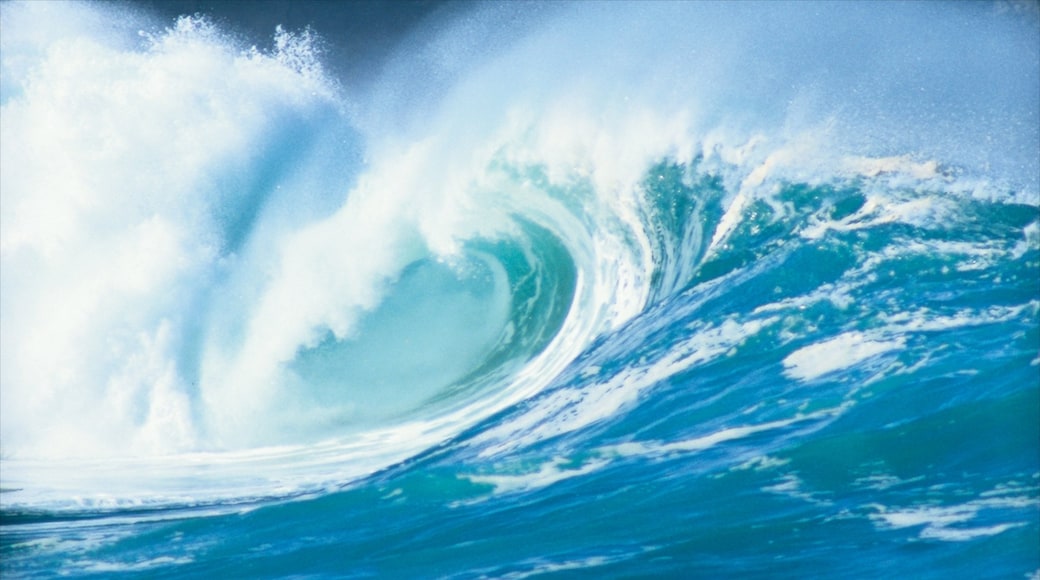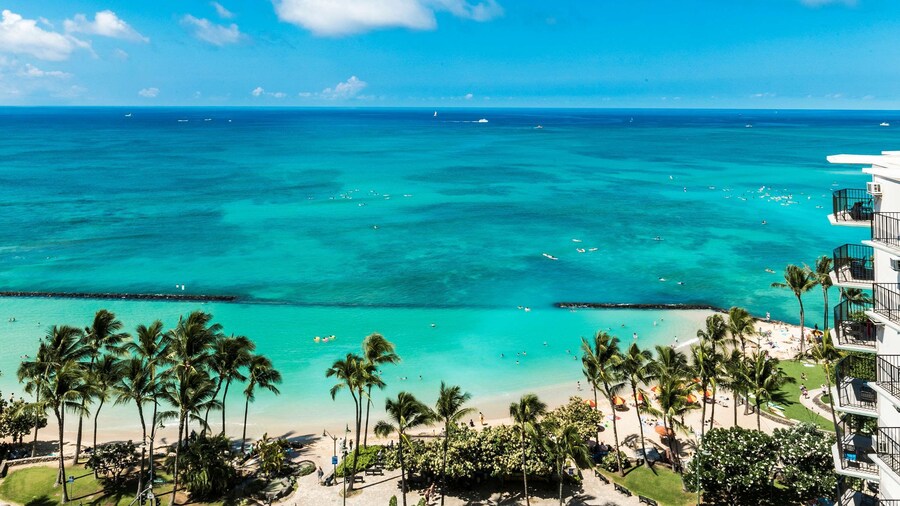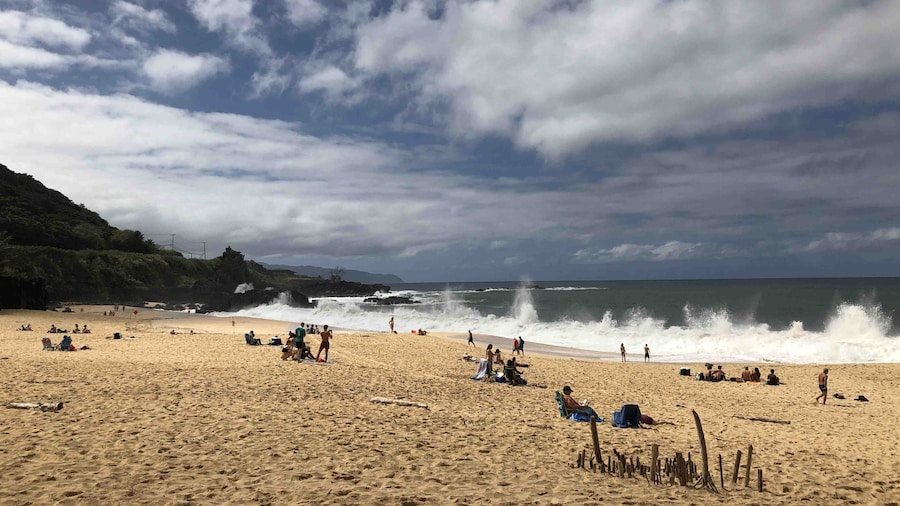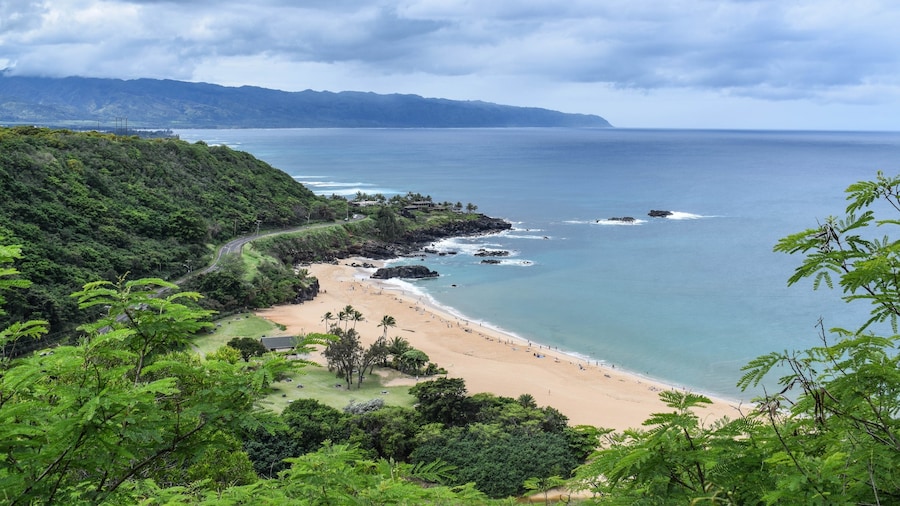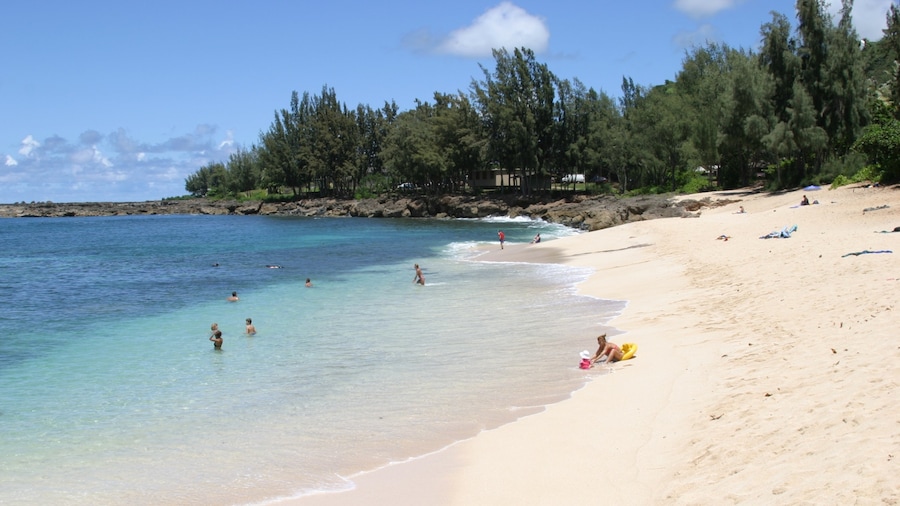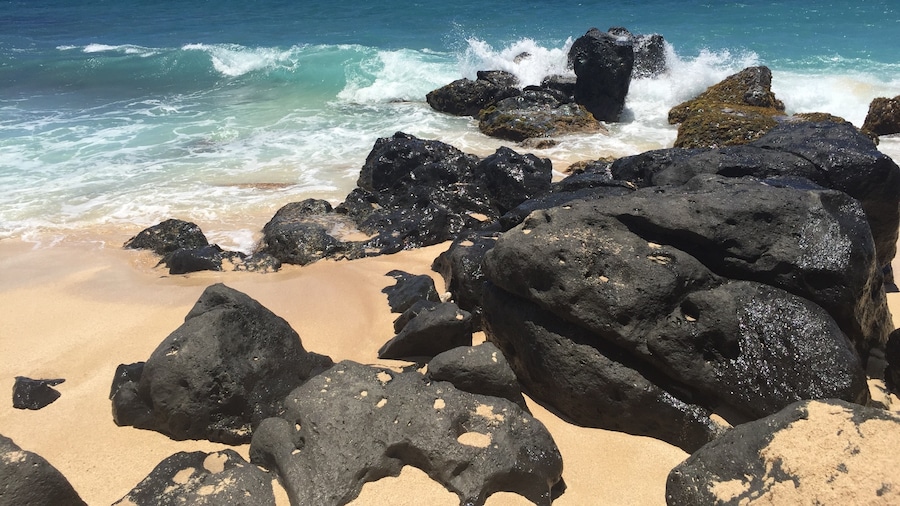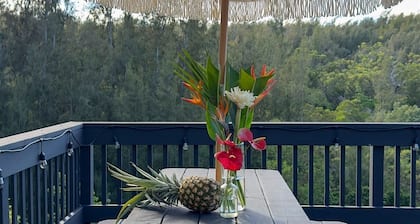Waimea Bay is another of O’ahu’s most famous beaches. Watch as surfers take on the challenge of 9-metre (30-foot) waves between November and February. Coral just under the surface of the water makes conditions unsafe for anyone other than experienced surfers, but locals and visitors alike flock to the beach to enjoy the spectacle from the safety of the sand. In summer the beach is safe for snorkelling and swimming.
If you come during winter, pack a picnic lunch and settle in for the day. Bring a pair of binoculars and a camera or simply watch with your own eyes as the brave surfers drop onto huge waves. Definitely don’t venture into the water unless you are an experienced surfer.
The wide beach has soft sand and the weather on O’ahu is sunny and warm year-round, with winter temperatures ranging from 24 C to 27 C (75 F to 80 F). Spend a day building sandcastles, playing beach games and wading in the shallows of the warm water.If the conditions are right, Waimea hosts the Quicksilver in Memory of Eddie Aikau Big Wave International, a famous surf competition dedicated to the heroic lifeguard and surfer Eddie Aikau.
In summer there are few waves and you can go swimming, snorkelling and fishing. Hire a hook and line and fish from the beach. Bring water shoes and discover fish swimming around the rock formations off shore.
Cross the Kamehameha Highway to the Waimea Valley gardens, where there are waterfalls and lush vegetation. See hibiscus erythrina and other native plants as you walk the paved 1.2-kilometre (1-mile) trail. The scenic track finishes at a waterfall with a natural swimming hole at its base. Waimea Valley is open every day except on public holidays.
Waimea Bay is located on O’ahu’s North Shore, less than an hour by car from Honolulu. If you don’t want to wait for limited parking spots, come by bus. There’s a stop near the entrance to the beach and gardens. You’ll find amenities such as picnic areas, showers, bathrooms and lifeguards at the beach.
